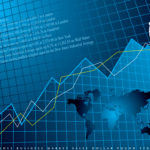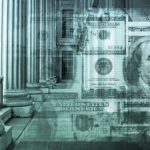 Chuck Jones Contributor | Jul 28, 2018, 12:08pm
Chuck Jones Contributor | Jul 28, 2018, 12:08pm
The Bureau of Economic Analysis at the U.S. Department of Commerce announced that the U.S. economy grew at a 4.1% annual rate in the June quarter. This is the highest rate since June 2014’s quarter result of 5.1%. The 4.1% is a solid increase from the March quarter’s 2.2%, but a little short of many projections. It is worthwhile to take a look at some of the underlying components that had an impact on the final number, starting with rounding that increased the result from 4.0% to 4.1%.
When the actual $18,507.2 billion GDP output is compared to last quarter’s $18,324 billion and multiplied by 4, the result is 4.0% (and 3.999% when expanded). The 4.1% calculation comes from adding the various components that make up GDP, such as personal consumption, private domestic investment, exports & imports and government spending.
The next item to note is that the calculation uses one-quarter changes and multiplies them by 4. This means that any component that had an unusual increase or decrease in a quarter gets magnified. This becomes even more important when something such as impending tariffs gets multiple players to shift their production or sales into one quarter vs. another, as can be seen in the June quarter export results. In theory, this should be offset in the next quarter, which is why it is important to take a look at growth over a year or longer timeframe. From a year ago GDP grew at a 2.85% rate. [MORE: Go to link here.]









